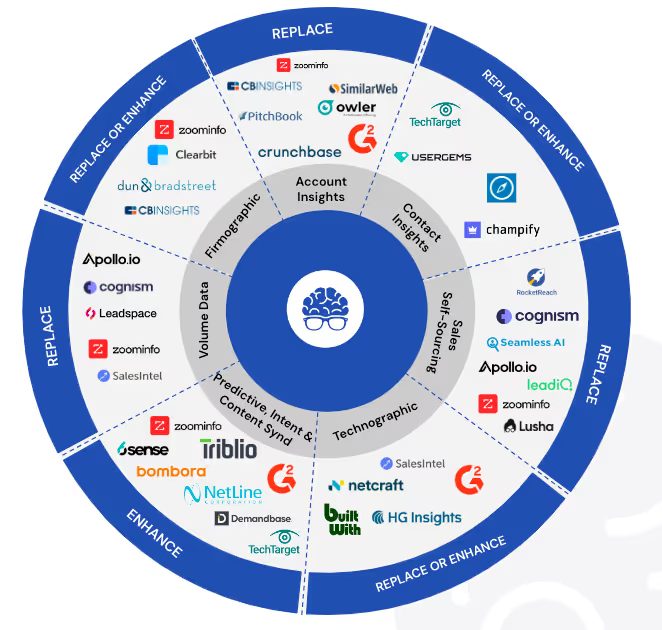Every company thinks they’ve got a data problem.
But what if the real problem isn’t the data you don’t have — it’s the data that’s lying to you?
Let’s talk about the silent killer of go-to-market efficiency: broken hierarchy data.
It’s not glamorous. It’s not even something most leaders can visualize. But it’s quietly wrecking alignment across sales, marketing, and RevOps in almost every global organization.
And here’s the uncomfortable truth — it’s not just a systems issue. It’s a cultural one.
When the CRM Lies, People Start Fighting
When your CRM says Acme Logistics, Acme Energy, and Acme Retail are three different companies — but they all roll up to the same global parent — it doesn’t just create data noise. It creates turf wars.
Sales reps step on each other’s deals. Marketing floods the same parent brand with redundant campaigns. Leadership celebrates “expansion” that’s really duplication.
Before long, you’ve got what looks like a pipeline problem, but it’s actually a trust problem.
And once that trust breaks, so does collaboration.
Reps question lead routing.
Marketing questions data accuracy.
Finance questions forecast integrity.
Hierarchy confusion breeds political entropy. And every RevOps leader knows — once GTM alignment fractures, fixing it with headcount or new tech is like pouring champagne into a cracked glass.
The Blind Spot of Traditional Data Providers
Dun & Bradstreet, ZoomInfo, and most of the “corporate tree” vendors love to claim they’ve solved hierarchy.
They haven’t.
Their models were designed for credit risk management, not revenue orchestration. They map ownership, not control. They trace legal structure, not operational influence.
And in the modern economy, that distinction is everything.
Think about:
- Franchise Networks: Corporate doesn’t control purchasing. The franchisee does.
- Agent Models: A real estate group or insurance network has thousands of semi-independent operators — each with their own CRM, budgets, and buyers.
- Holding Companies: A private equity firm might own 20 portfolio brands, each selling different products across regions — none of which behave like a single entity.
Traditional data systems collapse all of that nuance. They either over-aggregate (making twelve brands look like one) or fragment the structure entirely (making one brand look like twelve).
The result? A phantom market.
You think you’re selling into 500 unique accounts.
In reality, you’re spamming the same 200 — and missing 100 that don’t even appear in your database.
The Psychology of Misalignment
Every hierarchy failure triggers what organizational psychologists call “role ambiguity” — when multiple people believe they own the same goal.
In sales, that’s catastrophic.
Territories blur. Reps defend turf instead of collaborating. Marketing gets blamed for “bad leads.”
And leadership, desperate for answers, starts throwing tech at the problem — ABM platforms, intent data, segmentation tools — none of which fix the root issue.
Because the root issue isn’t technology.
It’s truth.
Hierarchy data defines the ground truth of your customer base. When that truth fractures, so does your team’s cohesion.
How Leading RevOps Teams Are Fighting Back
The smartest ops leaders aren’t trying to patch their hierarchies — they’re rebuilding them.
They’ve realized that in a globalized, digital-first economy, ownership is fluid and control is distributed.
So they’re taking a signals-based approach to hierarchy:
- Hiring Data reveals which entity actually drives operations regionally.
- Corporate Filings show M&A and ownership changes in real time.
- Web Metadata ties brand ecosystems back to parent entities.
- Technology Footprints expose shared systems across subsidiaries.
- Social and Product Signals uncover how influence flows through the organization.
This is hierarchy as a living graph — not a static lineage.
It reflects how your customers actually behave, buy, and grow.
It’s not just “data hygiene.” It’s revenue architecture.
Why This Debate Matters
If you lead GTM, RevOps, or sales operations and still rely on quarterly data refreshes from 1980s-style systems, you’re competing in a dynamic world with a static map.
And static maps don’t just lead you astray — they lead your teams to fight over the wrong territory.
Hierarchy clarity isn’t a nice-to-have. It’s a governance layer for the modern GTM machine.
Without it, your CRM becomes a battleground, your attribution turns fictional, and your forecasts become political.
It’s not the lack of data that kills alignment.
It’s the illusion of knowing.




